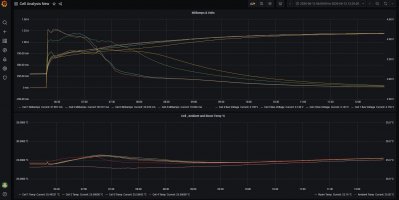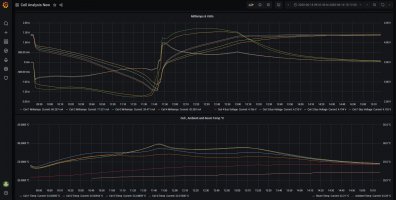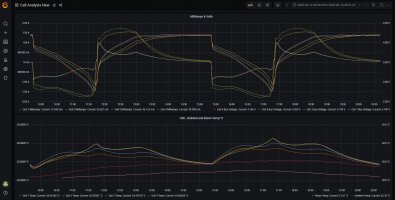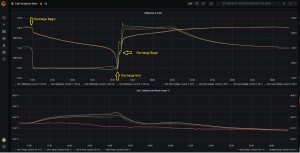Wolf
Moderator
- Joined
- Sep 25, 2018
- Messages
- 2,009
OK here is the charging curve of this test.
Again the same batteries in the same slots.

One thing to note this is a charge at 4A.
The thing that stands out of course is the low IR cells soak up the juice very early and once happy fade away.
Cell 1 which was depleted pretty badly during the discharge as it took the biggest hit for the duration was also right up there in the feeding troth.
Remind me to move the ambient temp sensor away from the charger................

Full chart of D/C cycle

Also I think I will go with the icharger I have, to increase the dischargeto 4Aas the ZH-YU limits me to 2.6A.
Wolf
Again the same batteries in the same slots.

One thing to note this is a charge at 4A.
The thing that stands out of course is the low IR cells soak up the juice very early and once happy fade away.
Cell 1 which was depleted pretty badly during the discharge as it took the biggest hit for the duration was also right up there in the feeding troth.
Remind me to move the ambient temp sensor away from the charger................

Full chart of D/C cycle

I will see what I can find in my plethora of cells to run this test.Can you make a test with low Cap & high IR and high Cap cell with low IR?
Also I think I will go with the icharger I have, to increase the dischargeto 4Aas the ZH-YU limits me to 2.6A.
Wolf














